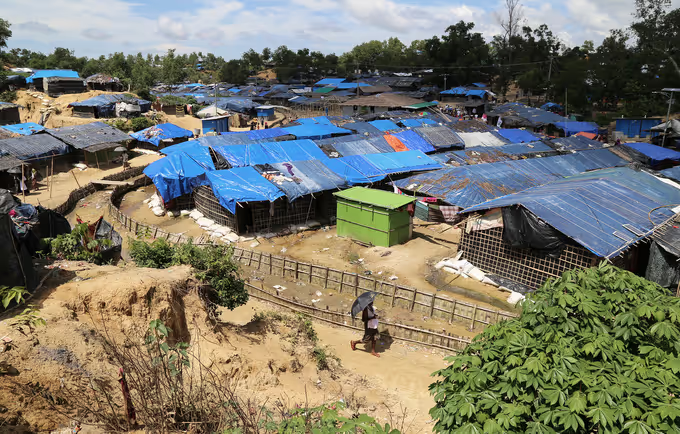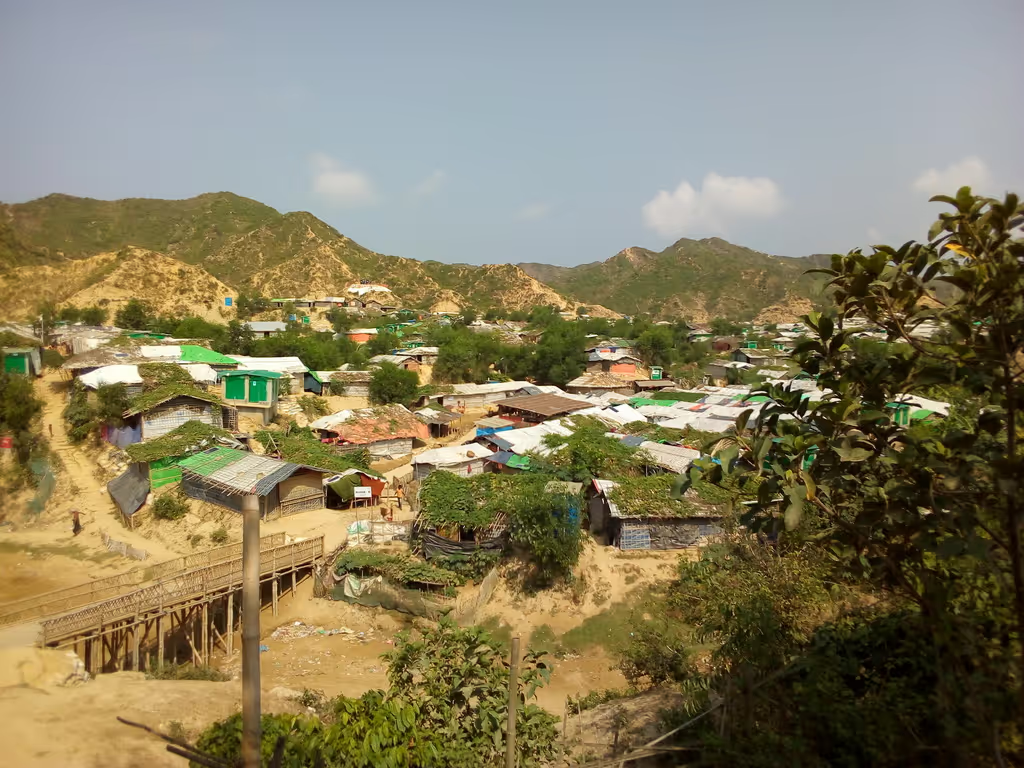Early Marriage and Fertility Decision-Making among Conflict-affected and Displaced Adolescents in Bangladesh and Yemen

Project overview
This study aimed to understand how conflict and displacement affect family formation among adolescents age 15-24, including through pressures for early marriage and to demonstrate fertility. It generates insights that could inform adolescent sexual and reproductive health programs in humanitarian settings.
Countries
Bangladesh
Yemen
Organisations
Johns Hopkins Bloomberg School of Public Health
Partners
BRAC – JP Grant School of Public Health, Community Partners International (CPI), Building Foundation for Development, Sana’a University
Area of funding
Humanitarian Research
Grant amount
£438,785
Start date
01
October
2021
End date
31
December
2024
Project length (in months)
39
Funding calls
Focus areas
No items found.
Topics
Sexual and Reproductive Health
Status
Closed
Project solution
This project offers [specific solution or intervention] to tackle [challenge]. By implementing [strategies, tools, or innovations], the project aims to achieve [desired outcomes]. The approach is designed to [specific actions or methods] to bring about meaningful change in [community, region, or issue area].
Expected outcomes
This project aims to achieve [specific outcomes], such as [measurable results, improvements, or changes]. The expected impact includes [benefits to the target community, advancements in research or innovation, or long-term effects]. By the end of the project, we anticipate [specific changes or milestones] that will contribute to [broader goals or objectives].
Principal Investigators: Linnea Zimmerman and Courtland Robinson, Johns Hopkins University
Research Snapshot: How do humanitarian crises affect adolescent marriage and childbearing?
This mixed methods study in Yemen and Bangladesh found that displacement and conflict exacerbated child marriage and childbearing, while adolescent SRH programmes primarily focused on prevention and did not reach those already married.
[.cta_link]Read the snapshot[.cta_link]
What did the study set out to achieve?
Child marriage (marriage or informal union before age 18) and childbearing among adolescents impact health and wellbeing. High rates of child marriage in Yemen and among the Rohingya living in Cox’s Bazar, Bangladesh may reflect pre-existing vulnerabilities, such as poverty and lack of education, and factors arising from conflict and displacement, such as sexual violence. This study set out to explore various drivers of child marriage and childbearing to understand the relationship between family formation, displacement, and social pressures. It generates insights that could inform adolescent sexual and reproductive health programs in humanitarian settings
What were the key findings?
- In Yemen, rates of child marriage were high, with displaced individuals slightly more likely (37.8%) to have experienced child marriage than non-displaced (34.5%). Child brides started childbearing earlier; though they waited longer after marriage compared to girls who married over the age of 18.
- In Bangladesh, approximately 25% girls and 7% of boys were married before age 18. Displacement appeared to lead to higher child marriage that has declined over time. Regardless of age at marriage, girls proceeded rapidly to childbearing.
- In both settings, the potential social consequences of appearing infertile motivated child brides to have children quickly, as young women feared partner abandonment and stigma.
- While socio-economic pressures such as entrenched gender norms and lack of educational and economic opportunity were drivers in both contexts, displacement and conflict exacerbated these and influenced child marriage or childbearing.
- Adolescent SRH programs in both settings primarily focus on prevention of child marriage. Once married, adolescents did not receive SRH education and outreach efforts.
What does this mean for policymakers and practitioners?
Findings point to complex drivers of high rates of family formation in both Yemen and Bangladesh. Adolescent sexual and reproductive health programs must explicitly address social pressures to have children rapidly upon marriage and identify intervention points for contraceptive programmes in the post-partum period to ensure young brides can access SRH and family planning services after their first child.
Policymakers and practitioners must be aware of the underlying social and cultural factors that affect decision making, including entrenched gender norms (as in the Rohingya communities) and related to religious faith (as in Yemen).
Lack of educational opportunities and poverty are known to be critical underlying drivers of early marriage. Interventions that provide girls and their families with access to education, training and other opportunities should be prioritised.
No items found.
Project delivery & updates
Stay up to date with the latest developments from this project. Here, you will find details on what has been delivered, resources created, and regular updates as the project progresses. Access key documents, reports, and other materials to see how the project is making an impact.
No resources/updates have been published yet for this project. Sign up for our newsletter to stay informed about upcoming publications and updates!
Join our Newsletter
Resources
Changing patterns of family formation among internally displaced populations in Yemen: evidence from cross-sectional surveys
Journal article
LEARN MOREIncidence of child marriage among refugees and internally displaced persons in the Middle East and South Asia: evidence from six cross-sectional surveys
Journal article
LEARN MORE“What other option did I have?”– The effect of conflict and displacement on child marriage and early childbearing among displaced Rohingya adolescents
Journal article
LEARN MOREFamily formation among adolescent Rohingya refugees; Trajectories into adolescent marriage and childbearing in Cox’s Bazaar Bangladesh
Journal article
LEARN MOREEchoes of Displacement: Exploring Early Marriage and Fertility Among Rohingya Adolescents
Report
LEARN MOREHealth and Social Status of Yemeni Women: A Comparative Study between IDP and Host Communities
Report
LEARN MORELatest updates
No items found.

